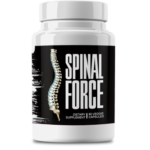This Village-Made Chinese Pain Reliever Eliminates Back And Joint Pain!
Lateral Knee Pain Treatment: Surgery vs. Non-Surgical Fixes

Lateral Knee Pain Treatment: Surgery or Natural Fixes—What Really Works?
That sharp twinge on the outer side of your knee when you walk, run, or even just climb stairs? You're definitely not alone. Lateral knee pain hits everyone from marathon runners to weekend warriors to office workers who've been sitting too long. The good news? Whether it's a recent injury or a nagging discomfort, there are proven ways to tackle it—from simple home remedies to surgical solutions when needed. Let's break down what causes this pain, how doctors diagnose it, and most importantly, how to make it stop.
What's Behind That Annoying Outer Knee Pain?
Lateral Knee Pain 101
We're talking about any discomfort along the outer (lateral) part of your knee joint. It might feel like a dull ache one minute and a stabbing pain the next, especially when you're active. The culprit could be anything from irritated tendons to worn-out cartilage—and identifying the real cause is half the battle.
Why Does This Keep Happening?
- IT Band Syndrome – The bane of runners everywhere, where that thick band of tissue rubs your knee the wrong way (literally).
- Meniscus Tears – Your knee's natural shock absorber gets damaged, often with a painful "pop" you can't ignore.
- LCL Injuries – Sudden twists or impacts can stretch or tear this important ligament.
- Arthritis – When wear-and-tear or inflammation sets in, making every step a challenge.
- Bursitis – Those tiny fluid sacs around your knee get angry and swollen.
Getting to the Root of the Problem
Before jumping into treatment, you'll want answers. Doctors typically:
- Play detective – Poking, prodding, and watching how you move to spot trouble areas.
- Bring in the tech – X-rays and MRIs don't lie when it comes to structural damage.
- Test your moves – How you walk, squat, or pivot often reveals the real issue.
Fixing Knee Pain Without Going Under the Knife
The RICE Method (No, Not the Food)
For fresh injuries or flare-ups, this classic approach works wonders:
- Take a break – Sometimes the best medicine is stepping back from what hurts.
- Ice it right – 15-20 minutes on, 20 minutes off to tame swelling.
- Wrap it up – A snug (not tight!) compression sleeve can provide welcome support.
- Put your feet up – Elevation helps drain excess fluid from the area.
Physical Therapy That Actually Helps
A good PT doesn't just give you generic exercises—they create a plan targeting your specific weaknesses. You might find yourself doing:
- Clamshells (surprisingly tough for such a simple move)
- Leg raises that make your thighs burn
- IT band stretches that finally give you relief
When You Need Extra Help: Meds & Injections
For stubborn pain, doctors might suggest:
- NSAIDs – Your standard ibuprofen can work miracles for inflammation.
- Steroid shots – Not a forever fix, but great for bad flare-ups.
- Joint lubricants – Like oil for a creaky hinge when arthritis is the issue.
Considering Surgery? Here's What to Know
Types of Knee Surgeries
When all else fails, these options might be on the table:
- Arthroscopy – Tiny cameras and instruments fix tears through keyhole incisions.
- LCL Reconstruction – Rebuilding that damaged ligament from scratch.
- Knee Replacement – For when the joint is beyond repair.
The Good, The Bad, and The Recovery
Upsides: Finally being pain-free and regaining your mobility.
Downsides: Potential complications and that dreaded recovery period.
What Recovery Really Looks Like
Brace yourself—healing takes time:
- Arthroscopy: Back on your feet in weeks, but take it slow.
- Ligament Surgery: A year-long journey back to full strength.
- Replacement: Months of rehab for a lifetime of better movement.
Surgery vs. Natural Fixes: Which Wins?
What Actually Works Best?
Mild cases often respond beautifully to conservative care, while serious structural damage usually needs surgical intervention.
The Cost Factor
PT and meds are easier on your wallet (and schedule) than surgery and its lengthy downtime.
Long Game Considerations
Surgery can be a permanent fix but comes with risks. Natural approaches might mean ongoing maintenance.
Everyday Tricks to Keep Knee Pain at Bay
Knee-Friendly Exercises
Swimming and cycling keep you moving without pounding your joints into submission.
Eating for Happy Joints
Load up on salmon, berries, and greens—nature's anti-inflammatory powerhouses.
Gadgets That Help
The right knee brace or shoe inserts can make all the difference in your daily comfort.
Stop Knee Pain Before It Starts
Warm-Up Like You Mean It
Those five minutes of stretching could save you months of pain—especially for your IT band and quads.
Shoes Matter More Than You Think
Ditch the worn-out sneakers and get proper support—your knees will thank you.
Mix Up Your Workouts
Alternate between high-impact and low-impact days to avoid overuse injuries.
When It's Time to Call the Doctor
Red Flags You Can't Ignore
- Swelling that makes your knee look like a balloon
- Your knee giving out unexpectedly
- Pain that just won't quit after weeks of home care
What Happens at the Specialist
They'll examine you, possibly order scans, and create a personalized game plan for your recovery.
The Bottom Line on Beating Knee Pain
Key Things to Remember
- Most cases improve with rest, therapy, and smart lifestyle changes.
- Surgery is a last resort, but sometimes the best option.
- Prevention is way easier than treatment—take care of those knees!
Your Next Steps
Every knee tells a different story. The smart move? Get expert advice to find the right solution for your specific pain. Whether it's natural healing or surgical repair, getting your knees back in working order means getting your life back too.
Dealt with lateral knee pain before? Drop your best tips (or questions) below—let's help each other out!








